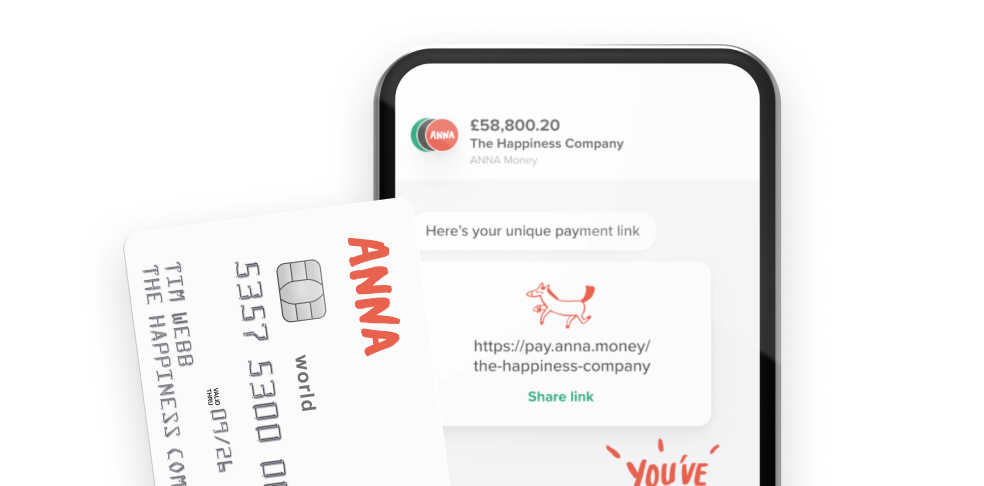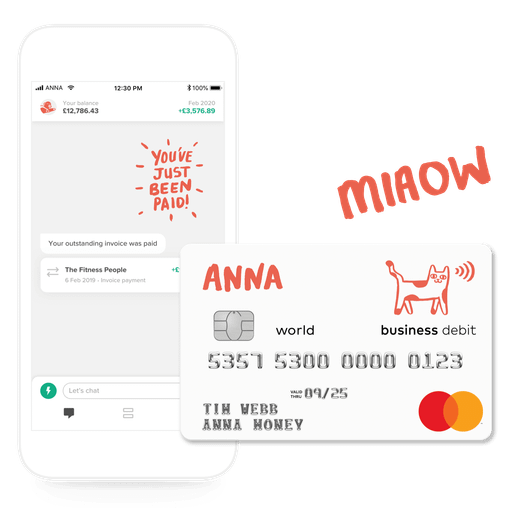What is a UTR Number and How To Get and Find It in 2026?


If you’re self-employed or a business owner in the UK, a UTR number (or “unique tax reference number”) is a must for filing taxes. You may also need one as an employee if HMRC requires you to submit a Self Assessment tax return – for example, where your income exceeds £150,000 through PAYE or you meet other Self Assessment criteria. The number serves as an identifier for self-employed individuals and companies, allowing HMRC to identify and track them.


What Is a UTR Number?
A UTR number is a 10-digit code issued by HM Revenue and Customs (HMRC) to uniquely identify taxpayers within the UK tax system. It may sometimes be followed by the letter 'K' (e.g., 1234567890K).
Both individuals and companies receive UTR numbers upon registering for self-assessment or corporation tax.
Examples of UTR formats:
- 1234567890
- 123456789K
Note: Personal and company UTRs serve the same function but are assigned separately. If you're both self-employed and own a company, you'll have distinct UTRs for each.
If you are both self-employed and have a company, you will receive two UTRs – and if you own multiple companies, you will receive multiple UTRs.
Why Do You Need a UTR Number?
A UTR number is crucial for:
- Filing Self-Assessment Tax Returns: HMRC uses your UTR to process your tax returns and ensure accurate tax calculations.
- Registering for Corporation Tax: Companies need a UTR to register for and pay corporation tax.
- Participating in the Construction Industry Scheme (CIS): Contractors and subcontractors require a UTR for CIS registration.
- Communication with HMRC: Your UTR is used in correspondence regarding your tax affairs.
As soon as you register a business or for self-employment in the UK, you will obtain a UTR by default, and you will need to use it every time you file your taxes.
Failure to obtain or use your UTR when required can lead to penalties and complications with HMRC.
Who Needs a UTR Number?
You will require a UTR number if you:
- Are self-employed as a sole trader and earn more than £1,000 annually.
- Operate as a partner in a business partnership.
- Run a limited company; the company itself will have a UTR, and directors may need personal UTRs for self-assessment.
- Have additional income outside of PAYE, such as from property rentals or investments.
- Are required by HMRC to submit a Self Assessment tax return – for example, due to high income, untaxed income, or other specific criteria.
For more details on registering as a sole trader, refer to our guide on How to Register as a Sole Trader in the UK.
How to Get a UTR Number?
You cannot apply directly for a UTR number; instead, HMRC issues it automatically when you register for self-assessment or incorporate a company.
For Sole Traders:
1. Register for Self-Assessment: Inform HMRC that you're self-employed by registering online through the HMRC website.
2. Provide Necessary Information: This includes your full name, National Insurance number, date of birth, contact details, and information about your business.
3. Receive Your UTR: HMRC will send your UTR by post within 10 working days (21 days if you're abroad).
For Limited Companies:
1. Incorporate Your Company: Register your company with Companies House. You can do this directly or through a formation agent. 2. HMRC Notification: Companies House notifies HMRC upon incorporation.
3. Receive Your Company UTR: HMRC will send a letter to your registered office address containing your company's UTR, typically within 14 days.
For a step-by-step guide on registering a business, see How to Register a Business in the UK.
What documents and information do I need to obtain a UTR number?
HMRC will ask you for the following when applying for self-assessment:
- Full name
- Address
- Date of birth
- Phone number
- Email address
- National insurance number
- Commencement of self-employment
- Details about your business
When registering a business or a partnership, you also need to give a business registration address and details of any shareholders or partners.
How long does it take to get a UTR number?
After registering for self-assessment or starting a business, you should receive your UTR number in around ten working days. If you're abroad, the process can take 21 working days.
Can I apply for a UTR number online?
Registering online is the easiest and most popular option. Simply register your business or for self-assessment through the HMRC website and wait to receive your UTR number through the post.
How can I get a UTR number by phone?
You can call HMRC on 0300 200 3310. If you’ve already registered through HMRC but can’t find your UTR number, they may be able to help you. However, they may redirect you to the online application process if you haven’t yet registered for self-assessment or your business.
How can I get my UTR number by post?
By default, you will receive your UTR by post, so you don’t need to do anything special for HMRC to send it this way.

HMRC will send a letter to your registered office address containing your company UTR.
Where to Find Your UTR Number?
Your UTR number can be found:
- On official correspondence from HMRC, such as tax return reminders or payment notices.
- By logging into your Personal Tax Account or the HMRC app.
- In your online Self Assessment account under the "Your details" section.
It's essential to keep your UTR number secure, as it's used to identify you in all tax-related matters.
UTR Number Usage and Legal Implications
If you try to submit a tax return without using your UTR number, you will be filling in the form incorrectly and could face a penalty.
What should I do if I've lost my UTR number?
Call the Self Assessment helpline on 0300 200 3310. Once you give them your national insurance number and other details, they will send you your number by post.
Can I use the same UTR number in different tax returns?
You should use the same UTR in your tax returns every year. However, if you have multiple UTRs because you have registered various business ventures, using the correct UTR in each tax return is crucial.
How do UTR numbers for business partnerships work?
After you register a business partnership, you will receive a UTR number for the partnership Your partners will also have their own UTR numbers as individuals.
How can I reactivate my UTR number?
You don’t need to do anything special. Your UTR remains valid even if you do not file for a period. Submitting a tax return does not create or reactivate a UTR. However, it is always good to check with HMRC to ensure that your records are up-to-date and that they do not require any additional information from you.
What happens if I use the wrong UTR number?
Using the wrong UTR number will mean that HMRC cannot process your return, which could result in a penalty. If you realise you’ve used the wrong number, contact HMRC and tell them you made an error.
How can I change my UTR number?
It’s not possible to change your UTR number, as this would mean HMRC wouldn’t be able to identify and track your past tax activities.
Is a UTR number the same as a tax code?
No. A tax code tells employers and pension providers how much tax-free allowance someone has and effectively how much tax someone will end up paying. Meanwhile, a UTR number identifies a company or those who file self-assessment returns.
Do you always have the same UTR number?
Yes. Even if you lose your UTR number, you will retrieve your original number after contacting HMRC, rather than receiving a new number.
Can I get paid without a UTR number?
If you are earning self-employment income above £1,000 per year, you must register for self-assessment or register a business as soon as possible. However, PAYE employees generally don’t need a UTR number.
Who may ask for my UTR number?
Usually, you will only need to give your UTR number to HMRC. However, you may need to give it to an accountant who files your taxes on your behalf.
Do I need a UTR number as a Sole Trader?
Yes. When you register as a sole trader, you will automatically receive a UTR number.
Do I have to pay to apply for a UTR number?
No. However, when you register a limited company, there is a £50 fee to incorporate a new company.
Over to You
For business owners and the self-employed, a UTR number is a crucial puzzle piece for filing tax returns. Once you receive yours, be sure to store it somewhere safe and memorable.
Need some help? ANNA can walk you through the process of registering a company and obtaining your UTR number.
Read the latest updates
You may also like
Open a business account in minutes



![How to Start a Currency Exchange Business in the UK [Guide]](https://storage.googleapis.com/anna-website-cms-prod/medium_Cover_3000_Landscaping_Business_Names_Creative_Name_Ideas_daad2f9e2a/medium_Cover_3000_Landscaping_Business_Names_Creative_Name_Ideas_daad2f9e2a.webp)




![140 Creative Tutoring Business Names [Ideas & Examples]](https://storage.googleapis.com/anna-website-cms-prod/medium_Cover_3000_Landscaping_Business_Names_Creative_Name_Ideas_d7964059b3/medium_Cover_3000_Landscaping_Business_Names_Creative_Name_Ideas_d7964059b3.webp)

![How to Start a Self-Employed Business in the UK [Guide]](https://storage.googleapis.com/anna-website-cms-prod/medium_Cover_3000_Landscaping_Business_Names_Creative_Name_Ideas_fe5b6edef1/medium_Cover_3000_Landscaping_Business_Names_Creative_Name_Ideas_fe5b6edef1.webp)
![How to Start an Electrician Business in the UK [Guide]](https://storage.googleapis.com/anna-website-cms-prod/medium_Cover_3000_How_to_Start_a_Car_Detailing_Business_Successfully_74488a6268/medium_Cover_3000_How_to_Start_a_Car_Detailing_Business_Successfully_74488a6268.webp)


![How to register a business in the UK [The Comprehensive Guide]](https://storage.googleapis.com/anna-website-cms-prod/medium_3ea7e729_c40b_461b_af87_a80e0854a8eb_register_a_business_323f493f31/medium_3ea7e729_c40b_461b_af87_a80e0854a8eb_register_a_business_323f493f31.png)
![Limited Company Advantages and Disadvantages in UK [2025 Guide]](https://storage.googleapis.com/anna-website-cms-prod/medium_a_BP_3_Nv_Iq_R_Lda_Bz_Vh_limited_company_advantages_and_disadvantages_bab7f6b99f/medium_a_BP_3_Nv_Iq_R_Lda_Bz_Vh_limited_company_advantages_and_disadvantages_bab7f6b99f.png)
